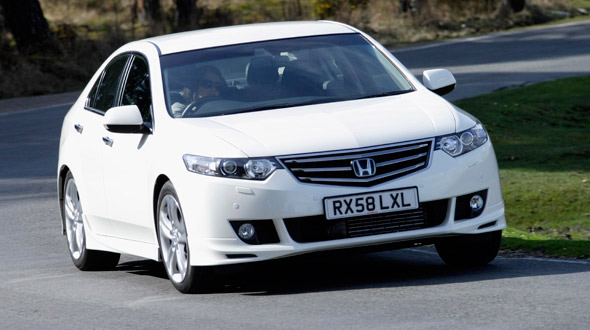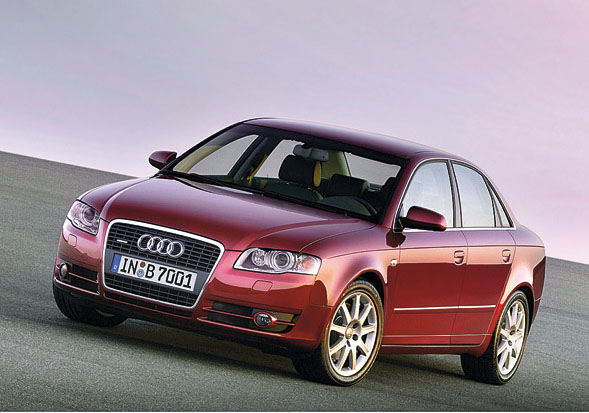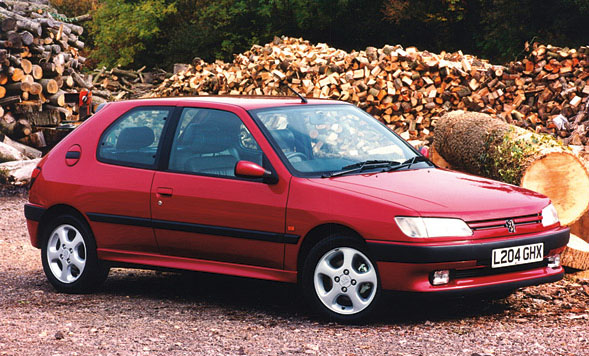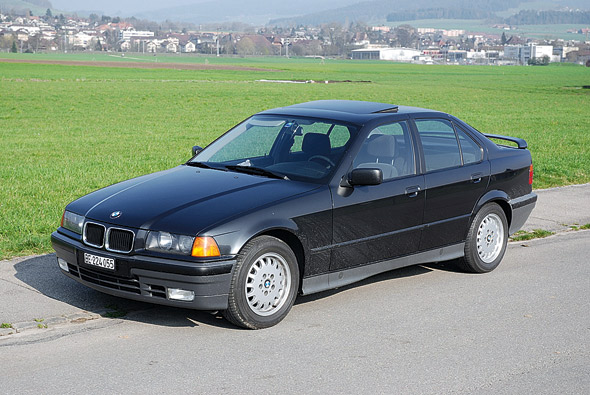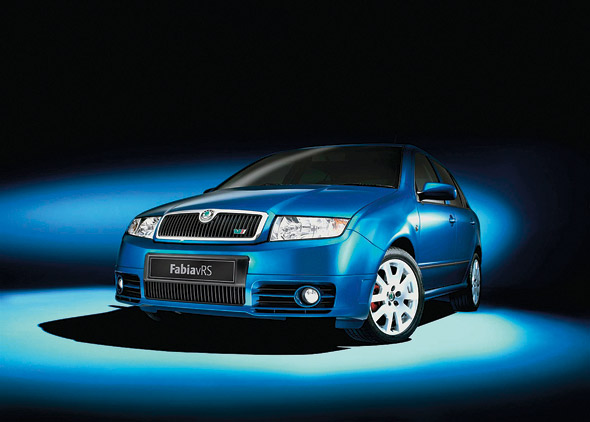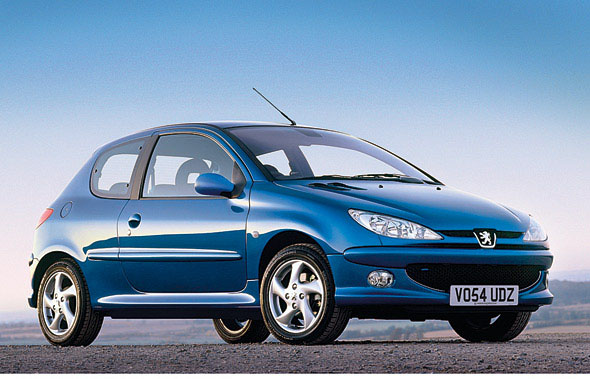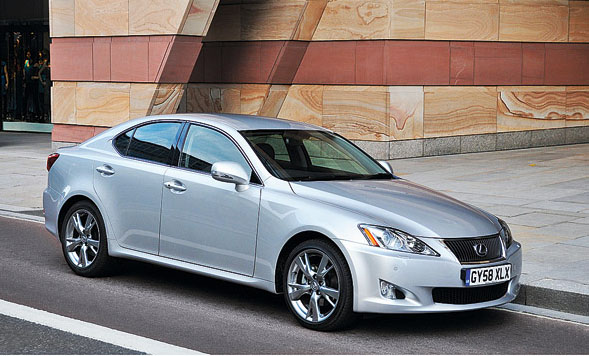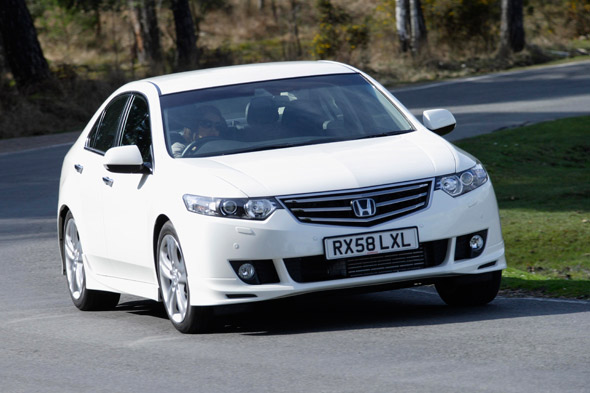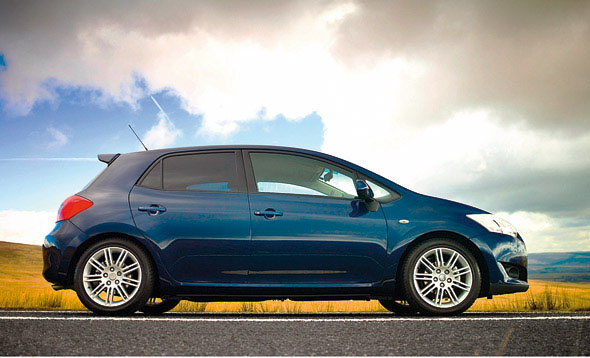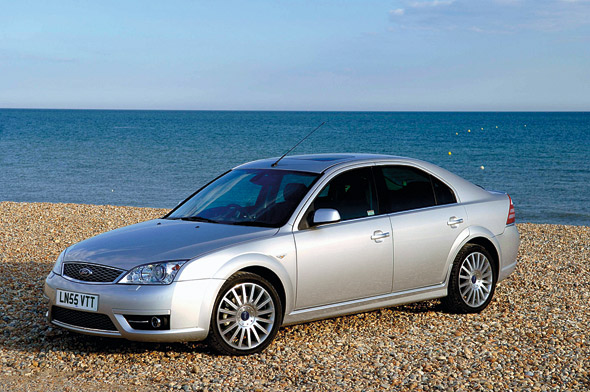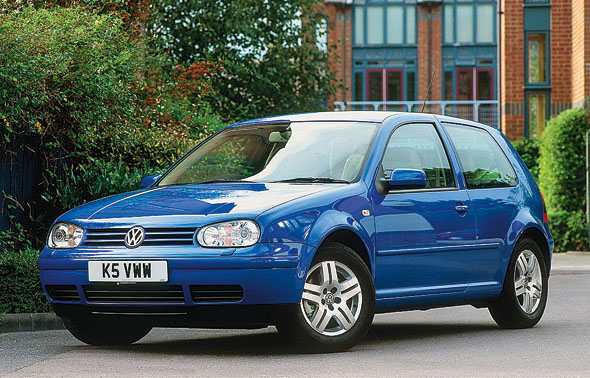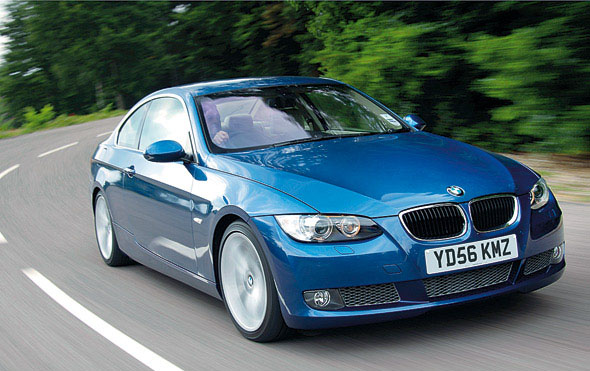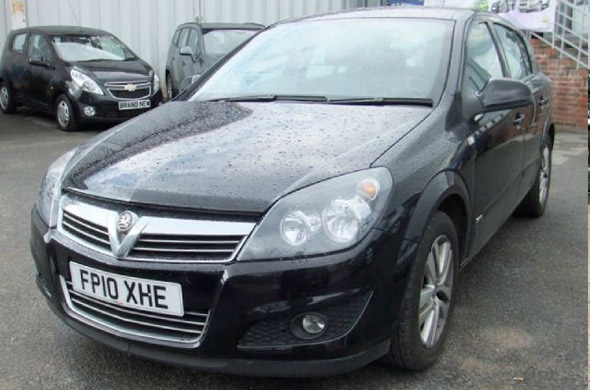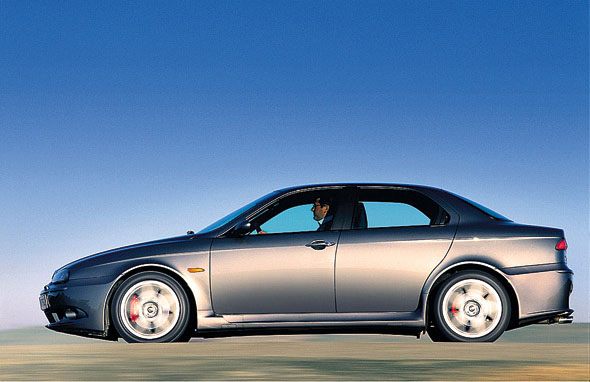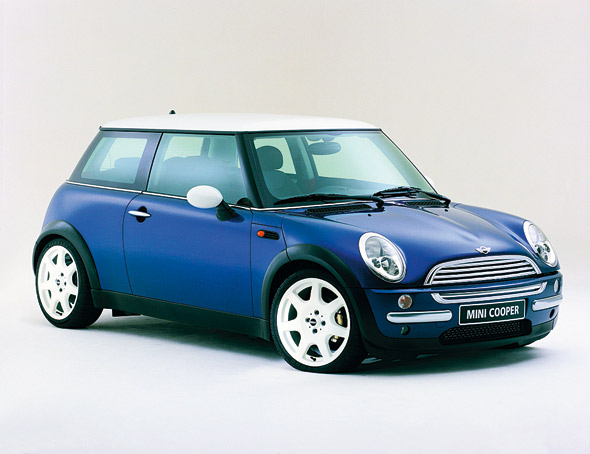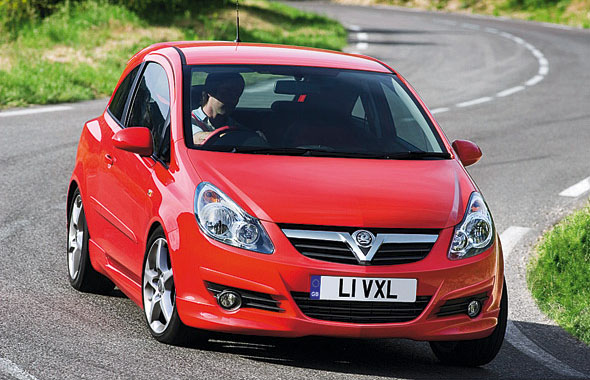Aside from a few exceptions, production turbo diesels are not made with purely performance in mind, there is no diesel powered R26-R rival for example. They are all sensible and economical cars, it’s just that some happen to have a performance aspect to them too.
As you all know, the beauty of tuning is you can get a car and adjust things to focus on the things you are interested in, in our case performance, and turbo diesels are just as ripe for this as the petrol powered cars we are used to seeing.
Certain turbo diesels have been blessed from the factory with attributes that make them a great base for anything from a performance daily to a track weapon, and here are our favourites…
Audi A4 B7 3.0 TDi Quattro
Tuning
✰✰
Acceleration
✰✰✰✰✰
Handling
✰✰✰✰✰
Looks
✰✰✰
Practicality
✰✰✰✰✰
Tuning: Since scooping Le Mans victories with its oil-burning race cars, Audi has been keen to show what a performance diesel can achieve. The A4’s 3.0-ltr six-pot is no exception, offering 229bhp, 332 lb/ft, 152mph and 0 to 60mph in 6.6 seconds as standard, in saloon or estate guise. If that’s not enough, a software remap will take it to 270bhp, along with a 90 lb/ft torque increase. Add a Milltek stainless exhaust system with cat bypass pipe, and the A4 can chase even the mighty BMW 335D. Naturally, you’ll also want to bolt on some coilover suspension, whopping big brakes and the usual Audi styling kit – like RS4 rims and bodykit.
Petrol Equivalent: There’s the petrol-powered six-cylinder 3.2ltr FSI Quattro, offering 252bhp and 243 lb/ ft torque. Then there’s the S4, with V8 grunt, 339bhp and 302 lb/ft. Somehow, the TDI can hold its head high, especially when remapped. It’s quicker in-gear than the FSI, although can’t quite match the engine note or poise – but with similar driveability, even some S4 owners opt for a TDI next time around.
Peugeot 306 D Turbo
Tuning
✰✰✰✰✰
Acceleration
✰✰
Handling
✰✰✰✰
Looks
✰✰✰
Practicality
✰✰✰✰
Tuning:
The first time the words ‘diesel’ and ‘tuning’ seemed to coincide was when they were used in reference to the Peugeot 306 D Turbo. Thanks to the Pug’s sweet styling and sharp handling, the tuning scene started to pluck power from its 92bhp, 1.9 oil-burning engine. Using old-fashioned techniques (it has mechanical injection, so there’s no ECU remap) the 306 D can easily be boosted to 105bhp with a tweaked pump, and persuaded to run well over 150bhp with the right hardware. We’re talking front- mounted intercooler, hybrid turbo, bigger injectors, cam and head work – and then of course there’s water injection and nitrous, if you’re brave. Best of all, the usual Pug mods mean the 306 still looks smart today.
Petrol Equivalent: The GTi-6 was Peugeot’s proper 306 performance hatch, with a skittish, semi-hardcore Rallye version and less-powerful S16 or XSi counterparts. On the face of it, all look pretty similar to a D Turbo, with equivalent specs. But the hotter petrol Pugs are alive and revvy, if a little more fragile and much less frugal.
BMW E36 325 TDS
Tuning
✰✰✰✰
Acceleration
✰✰
Handling
✰✰✰
Looks
✰✰
Practicality
✰✰✰✰
Tuning: One of the world’s first performance diesels brought 143bhp from its smooth straight-six, intercooled, 2,498cc powerplant. And it can easily be upped by 30bhp with a remap – potentially putting out over 200bhp and 300lb/f twhen treated to an uprated front-mounted intercooler, free-flowing filter, turbo-back exhaust system and accompanying boost increase. Being an E36 means most M3 goodies bolt straight on. Dropped down on Eibachs, Bilsteins and running bigger rims still means a rewarding drive. And with the right diff, a 325TDS can make an economical, low- budget daily drifter. Hell, it’ll even run on supermarket veggie oil…
Petrol Equivalent: Almost everything that can be said about the 325TDS also applies to its petrol-powered 192bhp 325i counterpart – smooth, six-pot grunt. Except, of course, the TDS also boasts a turbocharger – meaning a simple remap brings similar grins for a fraction of the running costs. Okay, so we’re not talking about M3 baiting, but you can thrash a TDS every day without the crippling fuel bills.
Skoda Fabia VRS
Tuning
✰✰✰✰
Acceleration
✰✰
Handling
✰✰✰
Looks
✰✰
Practicality
✰✰✰✰✰
Tuning: Thanks to its VAG diesel heart, the Fabia VRS is blessed with a wealth of tuning opportunity when it comes to tuning. Its 1.9 TDI engine has been tried and tested to cope with big gains from its healthy, standard 130bhp. A remap will add about 40bhp plus at least 50 lb/ ft of torque. Treat yourself to an enlarged air intake, turbo-back exhaust with manifold and decat, bigger airflow meter, front-mounted intercooler, hybrid turbo, enlarged injectors and uprated cam, then you could see 230 to 250bhp and over 350 lb/ft torque. To handle the grunt you’ll require a stronger clutch – preferably with a lighter flywheel – and you’ll also be after suitable suspension and brake modifications, fitting parts from other VAG machines.
Petrol Equivalent: The VRS is Skoda’s one and only hot hatchback, so if you want a sporty little Skoda, the diesel is your sole option. The only petrol-powered Fabia offering reasonable performance is the 2.0ltr Elegance, a 115bhp offering that’s completely unremarkable. It’s, well, just a car. The punchy VRS obliterates it in every way imaginable.
Peugeot 206 1.6 HDi GTi
Tuning
✰✰
Acceleration
✰✰✰✰✰
Handling
✰✰✰✰✰
Looks
✰✰✰
Practicality
✰✰✰✰✰
Tuning: Gone are the days when Peugeots were among the best cars to modify. Despite its GTi badge, sporty styling and sprightly performance (for its size), the 206 is woefully overlooked in the tuning market. The standard HDi GTi’s 1560cc motor pushes out 109bhp and 180 lb/ft torque – enough for 118mph and 0 to 60mph in 9.5 seconds. With a tuning box you can boost the figures to 135bhp, or maybe 140bhp with a good remap. Off-the-shelf power stops there, but binning the DPF, adding a front-mounted intercooler and fitting a hybrid turbo shouldn’t be too troublesome. Of course, being a Pug also means that there’s tons of stuff to choose from to modify the suspension, brakes, wheels and styling – if that’s your bag.
Petrol Equivalent: You’d expect the HDi to feel lame alongside its petrol GTi counterparts but its light alloy 1.6ltr lump suits the chassis, allowing agility to match the 2.0ltr petrol in a far better package than previous 90bhp 2.0ltr HDi options. Okay, it’s nowhere near as fast as even the 137bhp petrol, but the HDi GTi is quick, smooth and extra frugal. A draw.
Lexus IS220d
Tuning
✰✰
Acceleration
✰✰
Handling
✰✰✰
Looks
✰✰✰✰
Practicality
✰✰✰✰✰
Tuning: With its well-known D4-D engine, the Lexus IS220 pushes out a not inconsiderable 177bhp as standard – that’s the same as the sprightly Auris SR180. Now the Lexus is obviously a damn sight bigger than its stablemate, yet thanks to low-down grunt it can still pull hard. If you were to add a tuning box to the four-cylinder, 2.2ltr turbo diesel, the claimed return is an optimistic 215bhp, but the gains in torque mean you’ll never feel short-changed. A fast road driver would be well advised to sharpen the handling with springs and dampers, then visit a Jap tuning specialist to see what custom parts can be fitted. A big intercooler and turbo should result in 250bhp from this engine.
Petrol Equivalent: While the D4-D engine gets noisy and breathless wen running at higher revs, you don’t need to work it as hard to maintain the same speed as you do with its 204bhp petrol- powered counterpart. Both versions offer a notchy six-speed gearbox, and the diesel does well thanks to its refinement. Each of them has a great spec, so it really all boils down to costs.
Honda Accord DTEC Type S
Tuning
✰✰✰
Acceleration
✰✰✰
Handling
✰✰✰
Looks
✰✰✰✰
Practicality
✰✰✰✰✰
Tuning: Ok, so it’s not exactly a Type R, but the Accord DTEC Type S does still pack enough punch to justify wearing that sporty bodykit. Boasting 177bhp and 280 lb/ft torque from its 2.2ltr four-pot diesel means a return of 137mph top speed and a reasonable 8.5-second time to hit to 60mph. But throw in the benefits of a remap and soon see those figures jump to a whopping 225bhp and 325 lb/ ft. For now, there’s little else available for the diesel Accord, and if you want more you’ll have to settle for suspension mods or start searching for suppliers of custom kit. A bigger turbo and intercooler would do the DTEC a massive favour – so will you be the first to try it out?
Petrol Equivalent: With no Accord Type R on the scene any more, this diesel model is Honda’s sportiest saloon. Its excellent i-DTEC-engined Type S is more than a match for the petrol-powered, auto-only, 201bhp, 2.4ltr, EX-spec i-VTEC. Yes, the petrol-engined version is quicker, but it feels sluggish – whereas the strong pull, 18in alloys and sports suspension of the oil-burner all add up to make it more fun to drive.
Toyota Auris 2.2 D-4D SR180
Tuning
✰✰
Acceleration
✰✰✰✰
Handling
✰✰
Looks
✰✰
Practicality
✰✰✰✰
Tuning: Out of the box, the 2.2ltr four-cylinder Auris packs 177bhp and 295 lb/ft torque – which translates to 131mph and the 0 to 60mph run being managed in only 7.8 seconds. By modern Toyota standards, it’s a proper hot hatch. Sadly, ready-to-run upgrades are few and far between right now, and if you want more than a tuning box (for 205bhp then visit a Jap tuning specialist to see what custom parts can be fitted. A big intercooler and turbo should result in 250bhp from this engine.
Petrol Equivalent: It’s a shame that Toyota’s recent trend for tree hugging means there are few sporty cars in the line-up. And in the Auris range, none of the petrol-powered machines come close to the SR180. The quickest you’ll get is an insipid 1.6ltr VVTi, which eventually pulls itself to 60mph in 10.1 seconds and ‘hits’ 118mph. In every sense, it’s a clear win for the diesel here.
Ford Mondeo ST TDCi
Tuning
✰✰✰
Acceleration
✰✰✰
Handling
✰✰✰✰
Looks
✰✰✰✰
Practicality
✰✰✰✰✰
Tuning: Unusually for Ford, it’s lagging behind rival manufacturers when it comes to the tuning of its diesel models. The firm’s own attempt at a sporty oil- burner – the Mondeo ST TDCi – was a cynically half-hearted attempt, with no modifications to the normal 155bhp, 265 lb/ft 2.2ltr diesel. Which leaves scope for improvement if you know where to look: a remap means 185bhp and feels immense by removing the low-down torque restrictors. Add a free-flowing filter, stainless exhaust and decat to help breathing and noise, followed by Bilsteins and Focus ST brakes. With a custom front- mounted intercooler and hybrid turbo it should be good for up to 215bhp – maybe more, if you’re brave.
Petrol Equivalent: Yes it looks like an ST220, but the ST TDCi is a very different drive – lacking the thirsty V6 model’s front suspension, steering and Recaro seats. And despite the diesel having similar performance when remapped, side-by-side with the silky 3.0ltr petrol the frugal but unrefined derv is in a lower class. Whichever you buy, you’ll want the other.
VW Golf GT TDi 150 Mk.4
Tuning
✰✰✰✰
Acceleration
✰✰✰
Handling
✰✰✰
Looks
✰✰✰
Practicality
✰✰✰✰✰
Tuning: As you’d expect for any VW bearing the GTI badge, the TDI 150 has a world of tuning opportunities at its wheels. The traditional Golf Mk4 essentials of coilover suspension, big wheels and uprated brakes sharpen the soggy handling and ultra-dull styling. And under the bonnet there’s potential for adding almost 100bhp, along with upping torque to a whopping 350 lb/ft. Remapping a GTI TDI takes power to around 190bhp. Opting for a stage three setup – including exhaust, manifold and downpipe, hybrid turbo, front-mounted intercooler, high-flow injectors and single-mass flywheel with uprated clutch – has up to 250bhp potential. Even a realistically usable 225bhp doesn’t detract from the excellent fuel economy.
Petrol Equivalent: The petrol Mk4 Golf is a lousy hot hatch, even the GTI. But modifications bring it alive, and tuning for its 1.8T engine can be wild. Both petrol and diesel benefit from the same chassis upgrades, so which is best? Whether standard or remapped, performance is equal – matching an R32 for pace – with the derv winning on economy.
BMW 335d
Tuning
✰✰✰
Acceleration
✰✰✰✰✰
Handling
✰✰✰✰✰
Looks
✰✰✰✰
Practicality
✰✰✰✰
Tuning: Okay, this is the one. This is the reason we should all consider going derv. Standard 335d figures are 282bhp, 428 lb/ft, 155mph and 6.1 secs to 60mph. And the twin-turbo, 3.0ltr straight-six doesn’t exactly need much tweaking to see off some serious sports cars. A remap alone can boost power to around 340bhp, along with immense torque – well over 500 lb/ ft. You could add exhaust and DPF mods, but there’s little kit available off-the- shelf. Who needs it, though, when an AC Schnitzer-tweaked 335d managed almost 180mph in road spec? It’s just a 3-Series, of course, so M3 rims, sorted suspension and big brakes can be enjoyed – as can the glorious handling of the Beemer’s rear-wheel-drive.
Petrol Equivalent: Most remapped 335d owners will tell you their car is faster than a 335i or even M3. Of course, most of that’s a smokescreen – but the performance is closer than petrol fans admit, and under acceleration the oil- burner can keep up with the twin-turbo 335i. Okay, the petrol wins for driving pleasure, but when using your head it could be the D that takes the win.
Vauxhall Astra SRi CDTi
Tuning
✰✰✰✰
Acceleration
✰✰✰
Handling
✰✰✰
Looks
✰✰✰
Practicality
✰✰✰✰✰
Tuning: It’s no coincidence that Vauxhall race team Triple Eight and tuner Thorney Motorsport have both seen fit to produce semi-official performance Astra oil burners based on the 1.9ltr CDTi. Its Fiat-sourced twin-cam powerplant is ripe for tuning, offering 120 or 150bhp as standard and genuine 190 to 200bhp potential from the addition of a humble tuning box. But why settle for that, when an exhaust, downpipe, decat, bigger intercooler and hybrid turbo will add more grunt, meaning that 240bhp (and over 350 lb/ft) is possible before internal mods are required. VXR brakes, wheels, suspension and bodykit bolt straight on – providing all the Astra you need but with 55mpg.
Petrol Equivalent: With an easily- achievable 200bhp on top, you’d expect the Astra CDTi to be a winner. The only drawback is its petrol-powered SRi 2.0 Turbo counterpart, which offers 167bhp or 197bhp in standard trim. Yes, the diesel takes it on acceleration but the petrol’s engine is similar to the VXR’s, and can take the same mods – and then it’s goodbye, CDTi.
Alfa Romeo 156 JTDM
Tuning
✰✰✰✰
Acceleration
✰✰✰✰
Handling
✰✰✰
Looks
✰✰✰✰✰
Practicality
✰✰✰✰
Tuning: A surprise candidate for tuning potential, the Alfa Romeo 156 JTDM is able to pump out the kind of power befitting a true Italian sports saloon. With 175bhp as standard from its 2.4ltr, five- cylinder, 20V engine, the JTDM boasts 284 lb/ft torque and a 0 to 60mph time of 8.0 seconds. A remap or tuning box should achieve over 210bhp, while going for a front-mounted intercooler, bigger turbo, decat and sports exhaust should see you on the road to 250bhp. At this power, though, beware: stock driveshafts are weak, the brakes are desperate for upgrading and the springs, shocks and anti-roll bars would all benefit from performance replacements.
Petrol Equivalent: The 156 range includes a variety of petrol-powered sports saloons, chief among them the GTA. With a 247bhp from its burbling 2.3ltr V6 and limited-slip differential, it offers 155mph and 0-60mph in 6.3 seconds – more than enough to see off its diesel counterpart in standard guise. But as an everyday driver? You’d be hard- pushed to justify the GTA over a tuned 2.4 JTDM
Mini Cooper 1.6D
Tuning
✰✰
Acceleration
✰✰✰
Handling
✰✰✰
Looks
✰✰✰✰
Practicality
✰✰✰✰✰
Tuning: Already affectionately known as the Dooper, the Mini Cooper 1.6D looks set to be a future star of diesel tuning. True, there’s little kit available at the moment, but give it time for more Doopers to hit the out-of-warranty second-hand market, and there will be loads of goodies to grab, straight off the shelves. Right now, the Dooper’s standard 108bhp, 177 lb/ft engine hits 121mph and takes it from 0 to 60mph in 9.6 seconds – and gives you 72mpg. A remap or tuning box will boost it to around 140bhp and 225 lb/ft, but don’t forget all the usual Mini upgrades fit – for spot-on stopping and handling, along with Cooper S Works styling. Very smart.
Petrol Equivalent: The jury is out. For everyone who prefers the Dooper, there’s a Cooper fan waiting to pounce. And that’s fair enough – the petrol’s 118bhp and 132 lb/ft keep performance almost on par with the diesel, so it boils down to driveability. The Dooper has more mid-range shove but runs out of steam much sooner – that means more grunt on the commute but less fun when you want a thrash.
Vauxhall Corsa 1.7 SRi
Tuning
✰✰✰✰✰
Acceleration
✰✰✰✰✰
Handling
✰✰✰✰✰
Looks
✰✰✰✰✰
Practicality
✰✰✰✰✰
Tuning: To be fair, the 128bhp Corsa 1.7 SRi has only recently hit the showrooms, and we shouldn’t expect much aftermarket attention just yet. That said, there’s already an EDS remap available, adding 25bhp and a tad more torque to the already impressive figures – cutting back the standard 8.9-second 0 to 60mph time and upping the 124mph top end. Before long there’ll be more upgrades on offer; like current Vauxhall diesel tuning, expect to get access to a front-mounted intercooler, hybrid turbo, exhaust and custom map when more SRi diesels hit the streets. Until then, settle for Corsa VXR rims and bodykit, Astra VXR brakes and sorted suspension.
Petrol Equivalent: In the line-up of Corsa SRis, the 1.7ltr diesel shares brochure space with a turbocharged petrol 1.6ltr. An unfair comparison? Maybe. The petrol offers 7.6 seconds from 0 to 60mph and 130mph from 147bhp. And thanks to having a detuned version of the VXR engine, it’s capable of running big power – adding 100bhp with ease. It can’t touch the diesel’s running costs, but that’s about all.

